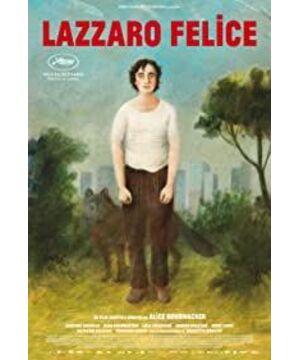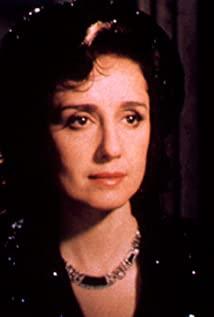The happy Lazaro has eyes that are always clear and ignorant of the world, but these eyes with great humanistic care finally shed unhappy tears. Such a divine character has left a deep imprint on the hearts of every audience.
It's a finely crafted religious film, and the online reviews for it are plentiful. But what I want to talk about is not Shen Bo's superb religious analysis, but from another angle, speaking freely about the opposition in form and the poetry in artistic conception. The former is the most exquisite design in the film, while the latter is a bit unsatisfactory in my eyes.
The opposition between eternity and change connects realism and magic in plot, past and present in time, country and city in space, son and mortal, rich and poor in characters, good and evil in behavior , Lazaro's life and death, and even the length of the two parts of the film is almost strictly 1:1... The two hours of these opposing settings provide the film with a steady stream of dramatic conflict, also with its symbolic Imagery reveals thought-provoking themes.
Lazaro's image of the Son remains the same, but his Holy Spirit left the hustle and bustle in disappointment at the end; people have undergone tremendous changes in time and space, but their disregard for the truth, the good and the beautiful, and the gods remain unchanged.
His eyes are always immutable and pure in the film, but the moment he falls into Bach's religious music, we know that there is his own thinking in such changes. Two deaths, from rebirth to sacrifice, that is, hope to despair, the great mission collapsed. And the silent fig tree and the moon, the beautiful holy sound, are still there regardless of time and space.
Antonia and Doncredi, the two characters who are closest to the "Holy Son" and have the most dramatic contradictions in the entire film, aren't they living in such helplessness? Antonya is the most devout believer in the village. She recognized and took in the "god" of Lazaro, but in the end she had to rely on stealing and robbing to maintain a living, playing tricks in front of the gods. She symbolizes the paradox of reality overwhelming ideals in the plebeian class. Don Credy was once a rich boy who ignored class and was full of a sense of justice and rebellious spirit. He also summoned the wolves together with Lazaro and summoned the gods of perfection, but the mask of hypocrisy was always worn on the gangsters. On his face, the blood of the saint was used as a substitute for his own fault. Decades later, the malicious jokes, the deception of the original villagers, and even the spiritual pure land of goodness disappeared. He symbolizes the ugly side of the rich class.
Therefore, in the discussion of change and immutability, the director used various opposing elements to express various concerns about the real society from the perspective of God. A seemingly profound theme also gradually emerges in this structural setting: the contradiction between the supreme good and the flaws in human nature is the eternal thing.
However, on the poetic expression of the film, I may have to disagree with most people.
After watching "Happy Lazzaro", we may be fascinated by the quiet and ethereal Italian village in the 16mm negative, but I have to say that the photography style of the whole film seems to be too "documentary". Perhaps the director did it deliberately. Except for a few shots that individually shot Lazaro and those religious images, the processing of the other shots seemed to be a bit mundane, resulting in the film's visual presentation of the religiousness is not ideal. That is to say, the heavy and sacred sense of religion, as well as the poetic sense that people often say, are greatly weakened when watching the film. Most of the time, our eyes are recording the camera’s observation of the lives of villagers and rich people.
Also, I'm skeptical of this fully symbolic protagonist setup. As a "deified" boy, Lazaro exists more in the state of "images" rather than normal "characters" in this film. Although the Holy Spirit of truth, goodness and beauty must always be the same, but to use this single standard to shape the protagonist of the movie and give up the vivid portrayal of the characters really makes the movie a little boring in terms of look and feel.
Speaking of which, I can't help but think of two works that are similar in some aspects to this one, namely, "Nostalgia" directed by Andrei Tarkovsky and "The Young Man" directed by Paul Sorrentino. Pope.
The self-immolated martyrs and sacrificed believers in "Nostalgia", and Pope Pius XIII, who fainted due to extreme grief in the proclamation in "The Young Pope", like Lazaro, is the Christ of this world, in order to save and redeem the masses Cry out of a numb heart, but in the end sacrifice tragically. The crowd watching the self-immolation of the martyrs in the square, the suspicious crowd under the placard, and the almost thugs in the white room, their faces were all the same numbness.
But in the above-mentioned character setting and photography style, these two works are obviously much more subtle than "Happy Lazzaro".
The mad martyr in "Nostalgia", on the one hand, is an unpleasant, eccentric and withdrawn character, but on the other hand, he sees through the sin and shame of the world. There is also a truth-seeking traveler who has a "spiritual isomorphism" relationship with the director. After self-doubt and quarrels with fellow women, they become followers of the martyrs. In this way, the two characters, as independent individuals, burst out with dramatic tension. In addition to Tarkovsky's consistently dreamlike and beautiful panning and panning, the religious sense and profound poetic sense that the film is intended to express immediately pops up on the screen.
And as a native Italian director, Sorrentino, who bears the mantle of Fellini, made Pius XIII more vivid and interesting when he created the true theological role of Pius XIII. A seemingly cynical pope who has many hobbies, is straight-forward, and tries every way to punish the rebels in the Holy See, but always has the pure heart of the savior. She prayed for the child and delivered it, and finally made her first public announcement on the billboard in despair at seeing the hopeless world. While it's not fair to compare the miniseries to the movies, the director did hold the audience's heart firmly in his portrayal of the protagonist's contradictory image. Moreover, the shots shown by Sorrentino in all his works are as exquisite as Renaissance oil paintings. The selection of frame, light and shadow, color, lens movement, etc. can bring people poetic enjoyment, even if they do not understand the religious symbols in the shots, The vivid characters and ingenious shots will touch everyone's artistic nerves.
So, Happy Lazzaro is a good work, but not good enough.
View more about Happy as Lazzaro reviews











